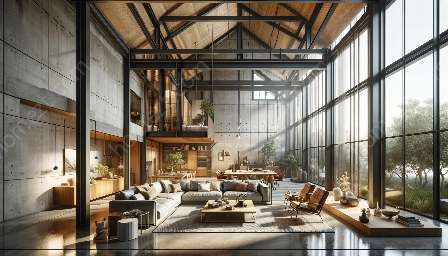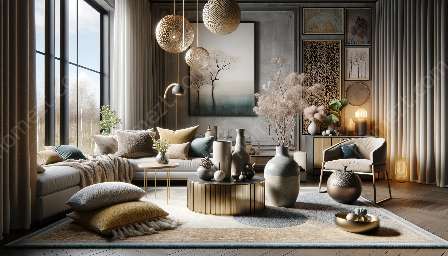Interior design is a multifaceted discipline that integrates construction and architectural principles to create functional and visually appealing living spaces. By understanding these principles, interior designers are able to address the unique requirements of homemaking and interior decor, ensuring that the design not only looks beautiful but also caters to the practical needs of the occupants.
The Role of Construction and Architectural Principles in Interior Design
Construction and architectural principles form the foundation of interior design, dictating the spatial layout, structural integrity, and overall aesthetics of a space. These principles guide the design process, ensuring that the interior spaces are not only visually striking but also structurally sound and functional.
Understanding Space and Proportion
One of the fundamental aspects of interior design is understanding the concept of space and proportion. Space planning involves assessing the available space and determining the most efficient and aesthetically pleasing way to utilize it. The principles of scale and proportion guide the placement of furniture, fixtures, and architectural elements to create a harmonious and balanced environment.
Integration of Architectural Elements
Architectural elements such as windows, doors, and structural components play a crucial role in interior design. These elements not only define the overall aesthetic character of a space but also influence the flow of natural light, ventilation, and spatial organization. Interior designers use architectural principles to integrate these elements seamlessly into the design, ensuring that they enhance the overall visual appeal and functionality of the space.
Material Selection and Construction Techniques
The choice of materials and construction techniques is a key consideration in interior design. Understanding the properties and applications of different materials, such as wood, metal, glass, and stone, allows designers to create compelling interior environments that are both durable and aesthetically pleasing. By leveraging construction principles, designers can select materials that harmonize with the architectural style of the space and fulfill the practical requirements of the occupants.
Interior Design and Homemaking
Interior design is intrinsically linked to the concept of homemaking, as it involves creating living spaces that support the day-to-day activities and emotional well-being of the inhabitants. By integrating construction and architectural principles, interior designers can craft environments that cater to the unique needs and lifestyles of the occupants. From kitchen layouts that promote efficient meal preparation to bedroom designs that encourage relaxation and rest, the application of construction principles enhances the functionality and comfort of the home.
Interior Design and Interior Decor
The relationship between interior design and interior decor is symbiotic, with construction and architectural principles serving as the structural framework for decorative elements. While interior decor encompasses the selection of furnishings, accessories, and color schemes, it is the underlying construction and architectural principles that provide the canvas for these decorative elements. Interior designers leverage their understanding of construction and architectural principles to ensure that the decor complements the spatial layout and architectural features, resulting in a cohesive and visually captivating interior design.
Conclusion
Understanding construction and architectural principles is paramount for aspiring interior designers, as it forms the basis for creating functional, aesthetically pleasing, and harmonious living spaces. By integrating these principles with the needs of homemaking and interior decor, designers can tailor their creations to the specific requirements of the inhabitants, ultimately elevating the quality of residential environments.




